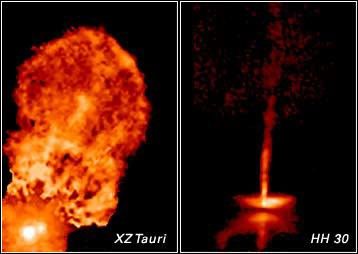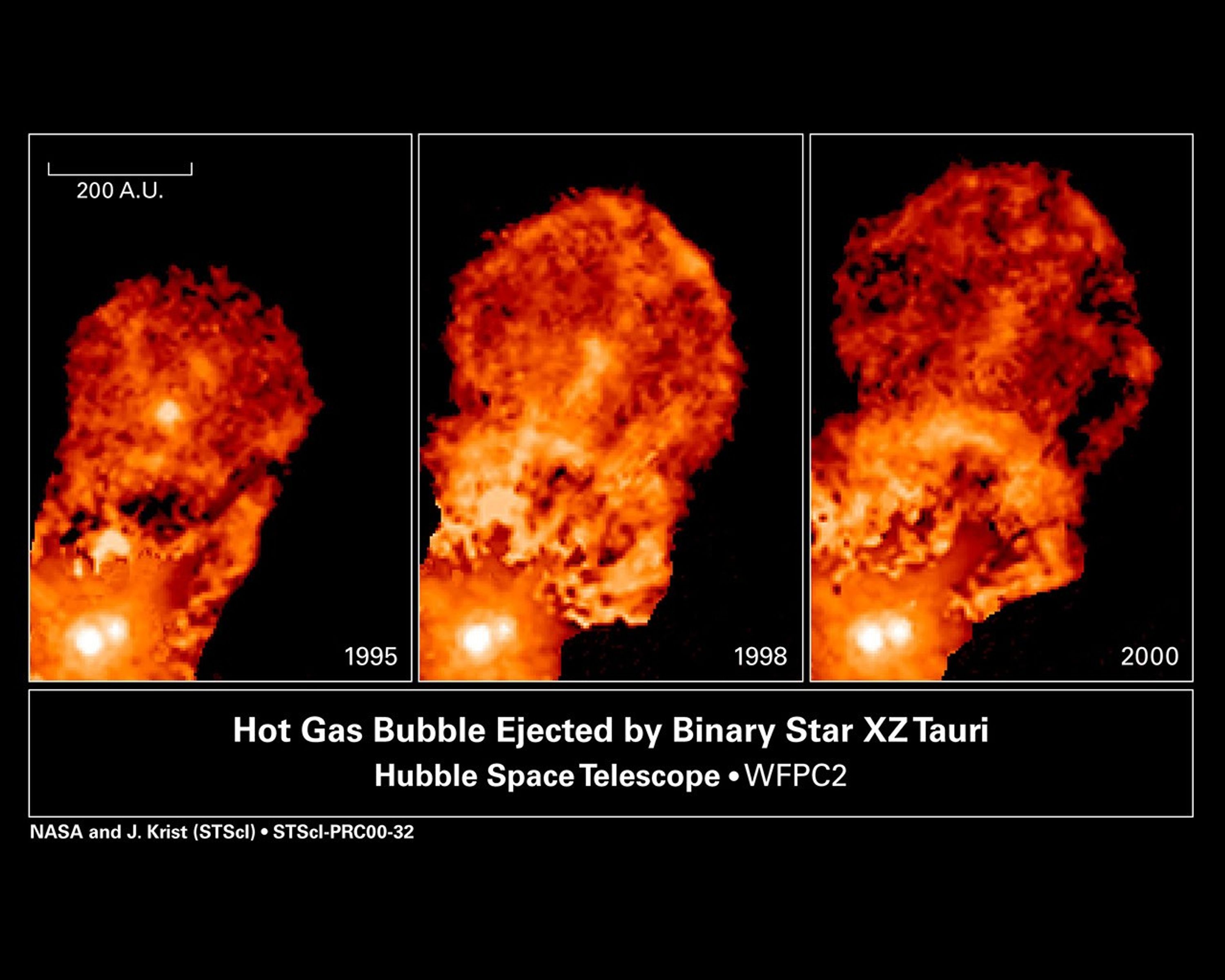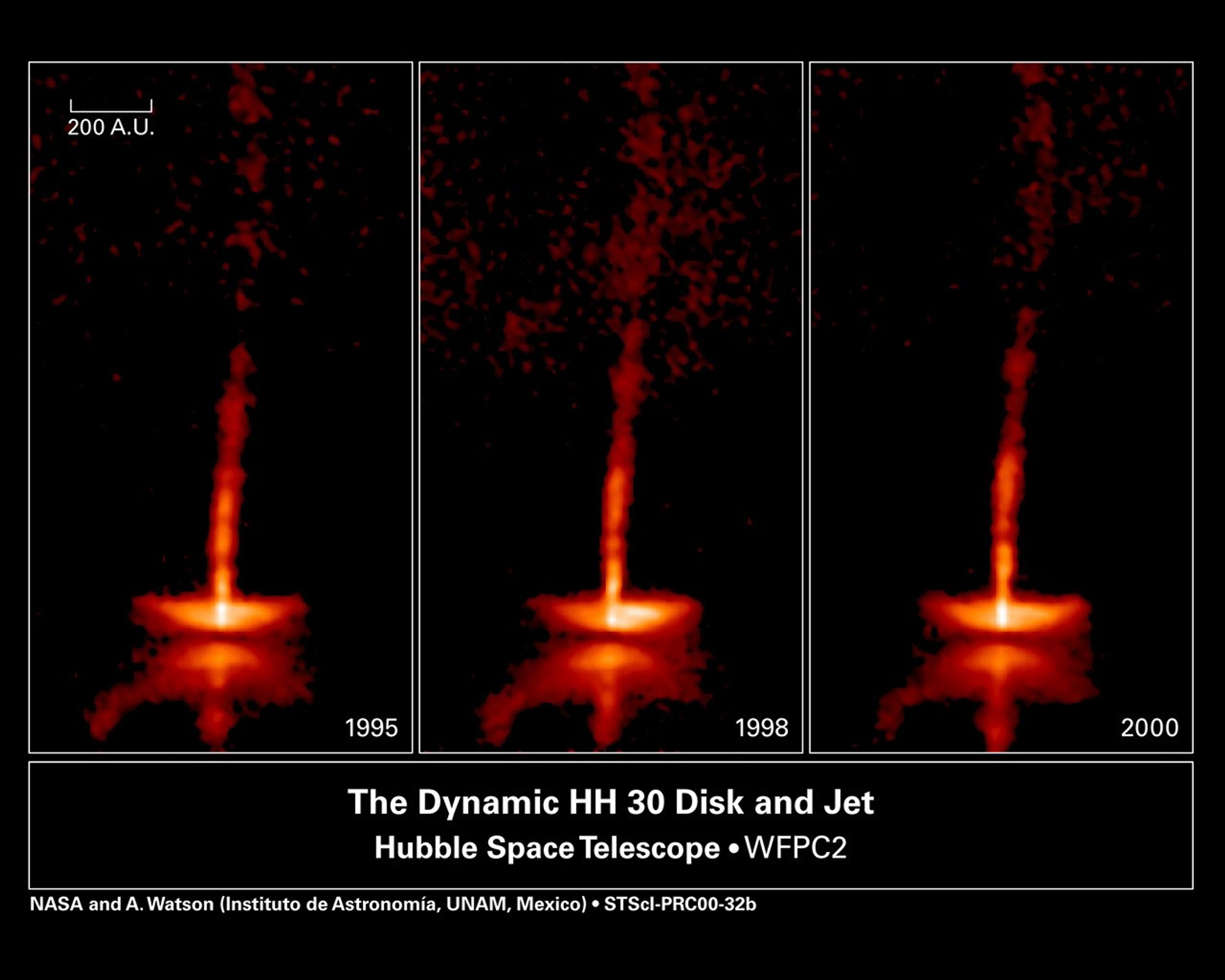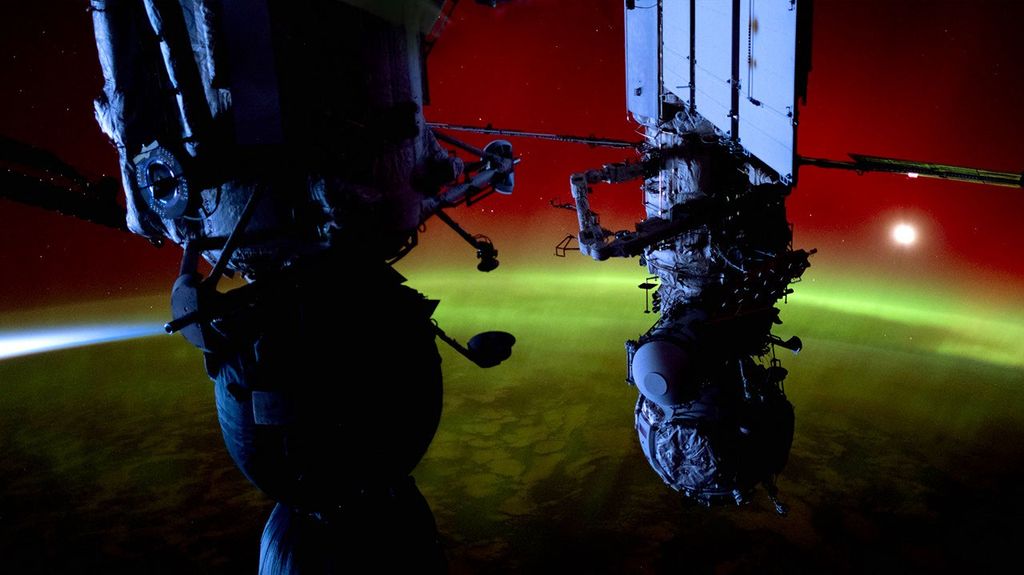1 min read
XZ Tauri
XZ Tauri is a young system with two stars orbiting each other. The pair is separated by about 4 billion miles (6 billion kilometers), about the distance from the Sun to the planet Pluto in our own solar system. Hubble astronomers were surprised to discover a bubble of hot, glowing gas extending nearly 60 billion miles (96 billion kilometers) from this young star system. The bubble's temperature is over 17,500 degrees Fahrenheit (9,700 degrees Celsius). The bubble appears much broader than the narrow jets seen in other young stars, but it is caused by the same process - the ejection of gas from a star. However, the Hubble images do not show the disk that feeds the outflow process - or even which star in the binary is the outflow source. Additional observations should help to point this out.
The movie shows that the outer edge of the bubble moves away from the binary system at a speed greater than 300,000 miles per hour (540,000 kilometers per hour), which is typical for stellar jets. This rate and the size of the bubble indicate that it is only about 30 years old, a mere blink of an eye in the life of a star. Sideways expansion of the bubble indicates that it has a strong internal pressure. A second bubble appears halfway up the waist of the first, indicating that new ejections may occur sporadically. Occasionally, bright, compact clumps of gas appear and then disperse within the bubble.
Perhaps the most interesting aspect of the bubble is the change in its appearance between 1995 and 1998. In the first picture, its edge and interior appeared equally bright; in 1998, the edge became distinctly brighter. Astronomers theorize that the gas around the bubble's edges has cooled, allowing it to glow more strongly as hydrogen and sulfur atoms recombine with electrons. Continued expansion of the bubble should cause the entire structure to fade from view - until XZ Tauri sends another eruption of hot gas into its surroundings.
- Release DateSeptember 21, 2000
- Science ReleaseMovies from Hubble Show the Changing Faces of Infant Stars
- Credit
Related Images & Videos

Movies from Hubble Show the Changing Faces of Infant Stars
Time-lapse movies made from a series of pictures taken by NASA's Hubble Space Telescope are showing astronomers that young stars and their surroundings can change dramatically in just weeks or months. As with most children, a picture of these youngsters taken today won't look...

Hot Gas Bubble Ejected by Young Binary Star System XZ Tauri
These images taken with the Hubble Space Telescope's Wide Field and Planetary Camera 2 reveal the evolution of bubbles of glowing gas being blown out from the young binary star system XZ Tauri. Gas from an unseen disk around one or both of the stars is channeled through magnetic...

Young Star HH30's Dynamic Disk and Jets
These images of HH 30 show changes over only a five-year period in the disk and jets of this newborn star, which is about half a million years old. The pictures were taken between 1995 and 2000 with the Wide Field and Planetary Camera 2 aboard NASA's Hubble Space Telescope....
Share
Details
Claire Andreoli
NASA’s Goddard Space Flight Center
Greenbelt, Maryland
claire.andreoli@nasa.gov































